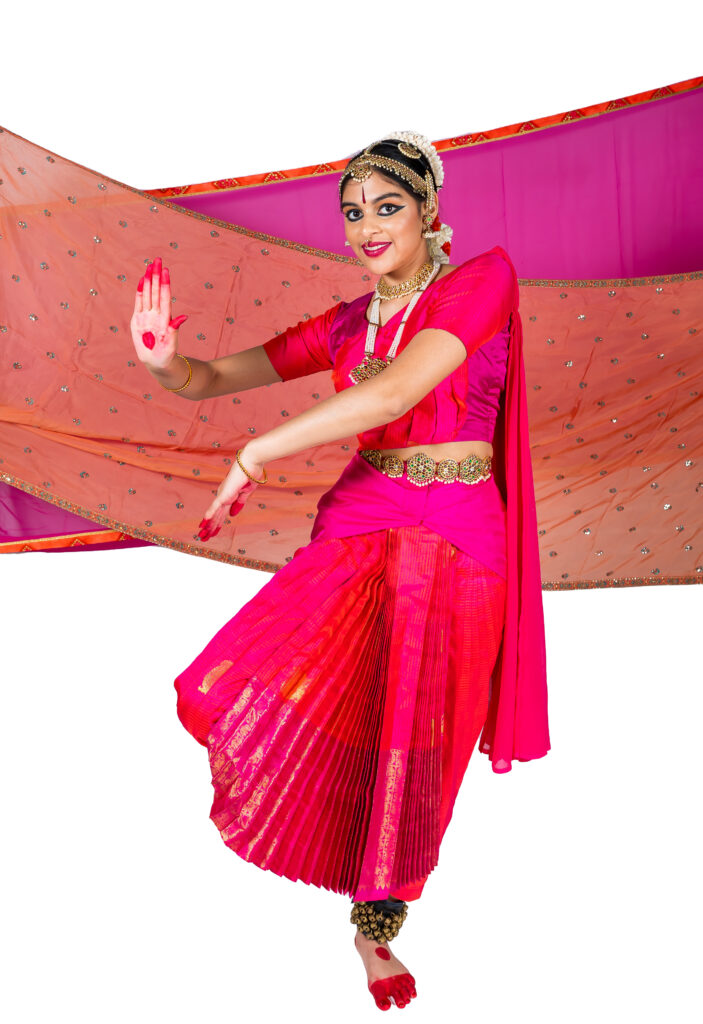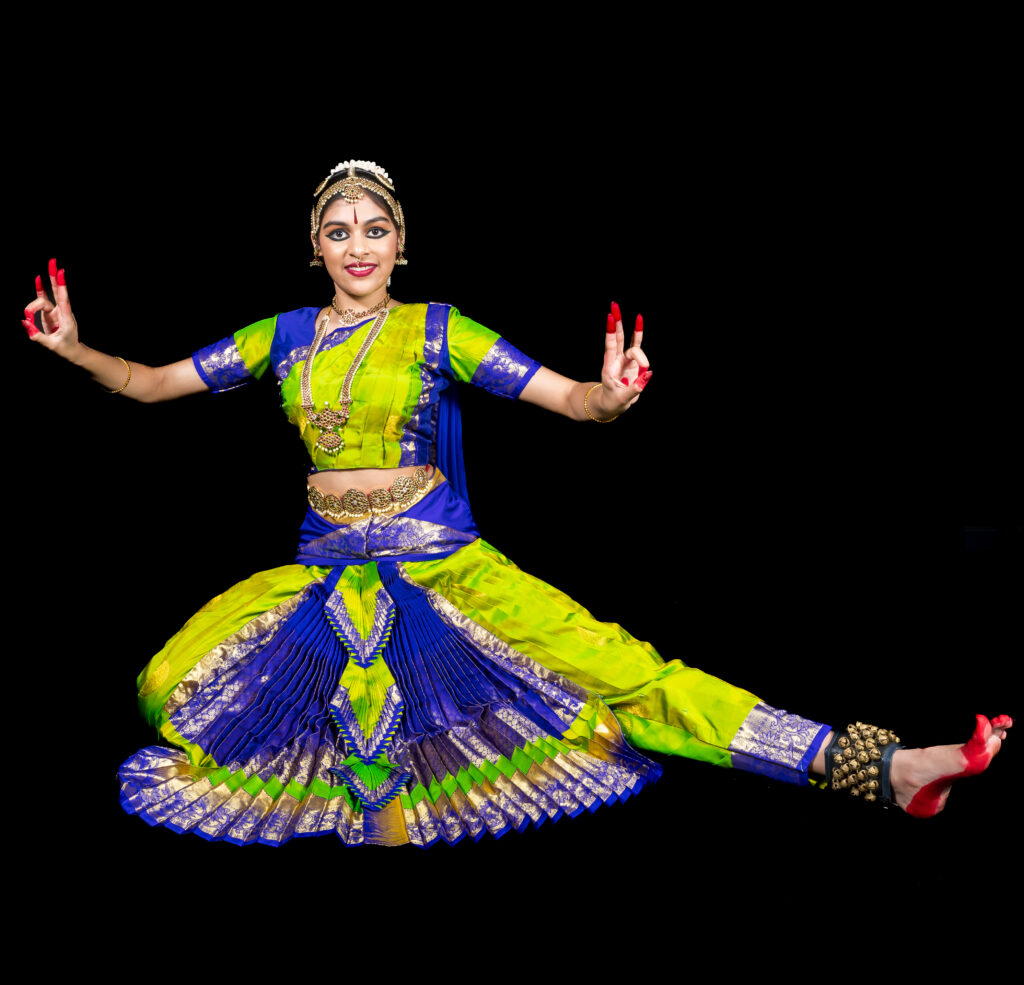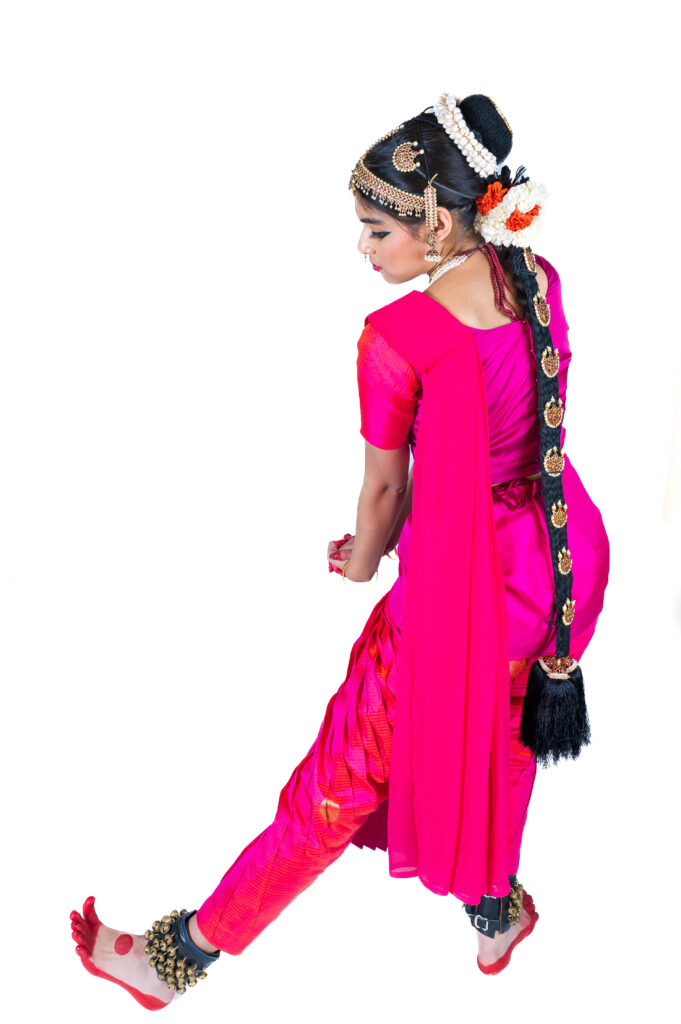Bharatanatyam: The Art

Bharatanatyam is an attempt to embody the divine beauty, charm, rhythms, and symbols that exists in heaven”
“Bharatanatyam is a means of spiritual elevation both for the dancer and the audience”
“In Bharatanatyam, the body should catch up to the tune, the hand must explain the meaning, the eye must speak the emotion, and the feet must beat the time measure”.


Introduction to Bharatanatyam
Bharatanatyam is a very popular Indian classical dance and form of cultural expression and source of pride among Indians in diaspora communities around the world. Among non-resident Indians, Bharatanatyam is commonly seen as an integral part of girls’ upbringing, and the dance is often used to solidify ties between second generation immigrants and their cultural heritage on the Subcontinent.
Today Bharatanatyam has attained a very high status and is immensely popular and many recognized universities offer degrees in Bharatanatyam, Artist’s are given international recognition and honors

Origin and Meaning
Bharatanatyam has a history going back to 2000 years. It is taught according to the guidelines established in a book on the science of Bharatanatyam – Natyasastra – that was written by Sage Bharatha. It is the most popular of the Indian classical dance forms in South India. The origins of this art form can be traced back to ancient Sanskrit literature and Temple sculptures; many of the ancient sculptures in Hindu temples are based on Bharatanatyam dance poses.
It is said that Bharatanatyam was originally derived from the four Vedas (the great ancient scriptures of Hinduism). Bharatanatyam, as the name depicts, is a blend of BHA – Bhava (Expression), RA – Raga (Melody), TA – Tala (Rhythm). Its foundational techniques also include Natya (a dramatic art of storytelling or mime), Nritya (a combination of body movements and expression) and Nritta (pure dance movements). The interpretation of Hindu mythology in Bharatanatyam is accomplished through complex rhythmic patterns and the language of gestures (or “abhinaya”).


Essence of Bharatanatyam
A good dancer needs to evoke the sentiment of the audience. Dance is of four kinds according to sage Bharata -Natya, Nrtta, Nrttya, and Abhinaya.
Natya or Nataka has some theme or story for it. This is a combination of music, dialogue rendering and rhythmic movement of the body. Nrtta is the portion of dance which does not relate to any psychological state or Bhava.
Nrttya is dance that relates to sentiment or rasa and the psychological state. This dance is fit to find a place in the court of great kings.
Adavus are the basic steps taught to the students. These are combinations of repetitive body movements accompanied by hand gestures. Adavus are of different kinds – Tattadavu, Natadavu, TattaMettadavu, Kattadavu, Kudittamettadavu, Maiadavu, Mandiadavu, Sarigaiadavu, and many more.
These then leads to Jathis or Korvais ( a combination of adavus set to intricate rhythmic patterns) and Theermanams (effective finishing to Jathis in a sequence). Adavus are done in the Araimandi (half sitting postures). Sitting in the proper araimandi posture is an essential feature of Bharatnatyam. Further the Adavus have to be executed with Angasudham (clarity in the bodily postures) and Talasudham (correct posture).
The students are taught the various Mudras (hand gestures). Mudras are a means of communication for the dancer to the audience in expressing the theme of the song and in bringing out the essence of the meaning. They are like words which form the sentence.
In addition to Mudras the dance student will have to master the various:
Shiro beda (Movement of the head)
Drishti beda (Movement of the eyes)
Vaksha beda (Movement of the chest)
Kati beda (Movement of the waist)
Parshva beda (Movement of the side)
Pada beda (Movement of the feet) which is a very important aspect.
In Summary, Bharatnatayam “give you so many different moves for all parts of the body, whether it’s the face, eyebrows, eyes, nose, hands, ankles – everything – hip, shin, and so on and so forth.” These basic moves for the different parts of the body are called aduvas. They combine to form pure dance, nritta.
But pure dance is just a “tool that you use to communicate, to express. The most important aspect of Bharatanatyam to express something. All of this is very clearly spelled out in the ancient texts. Natya, expression, combines with nritta, pure dance, to create nritya.
The most frequently used position in Bharatanatyam is called ardhamandala, and is similar to a deep demi-plié. The legs are bent to form a diamond shape. From this position, dancers can alternate between firm footwork and light-as-a-feather leaps.
What I learned from dancing in this position myself is that it is a lot more difficult to sustain than it looks! When you combine intricate hand movements and facial expressions with complex footwork, it feels like patting your head and rubbing your stomach at the same time.” Bharatanatyam definitely takes an incredible amount of mind-body coordination.

Costumes and Jewelry
Bharatanatyam is a dance form derived from the temples of South India and hence uses rich colorful costumes and jewellery. The costumes are mainly made out of pure Kancheepuram silk with dazzling jaris (gold laced borders). The jewellery used is called temple jewellery and mainly uses red stones and pearls with a dash of green and white for combination.


Carnatic music and Bharatanatyam
Bharatanatyam is strongly linked to Carnatic music. The various rhythmic patterns and compositions used for dancing are drawn from Carnatic music. In order to become a full-fledged dancer/ choreographer/ teacher, a Bharatanatyam dancer must have a strong mastery in Carnatic music. Further, in order to gain mastery in Nattuvangam (the art of conducting Bharatanatyam recitals), a background in Carnatic music is essential. Dancers who are Carnatic Musicians as well, have a strong advantage in the world of Bharatanatyam.